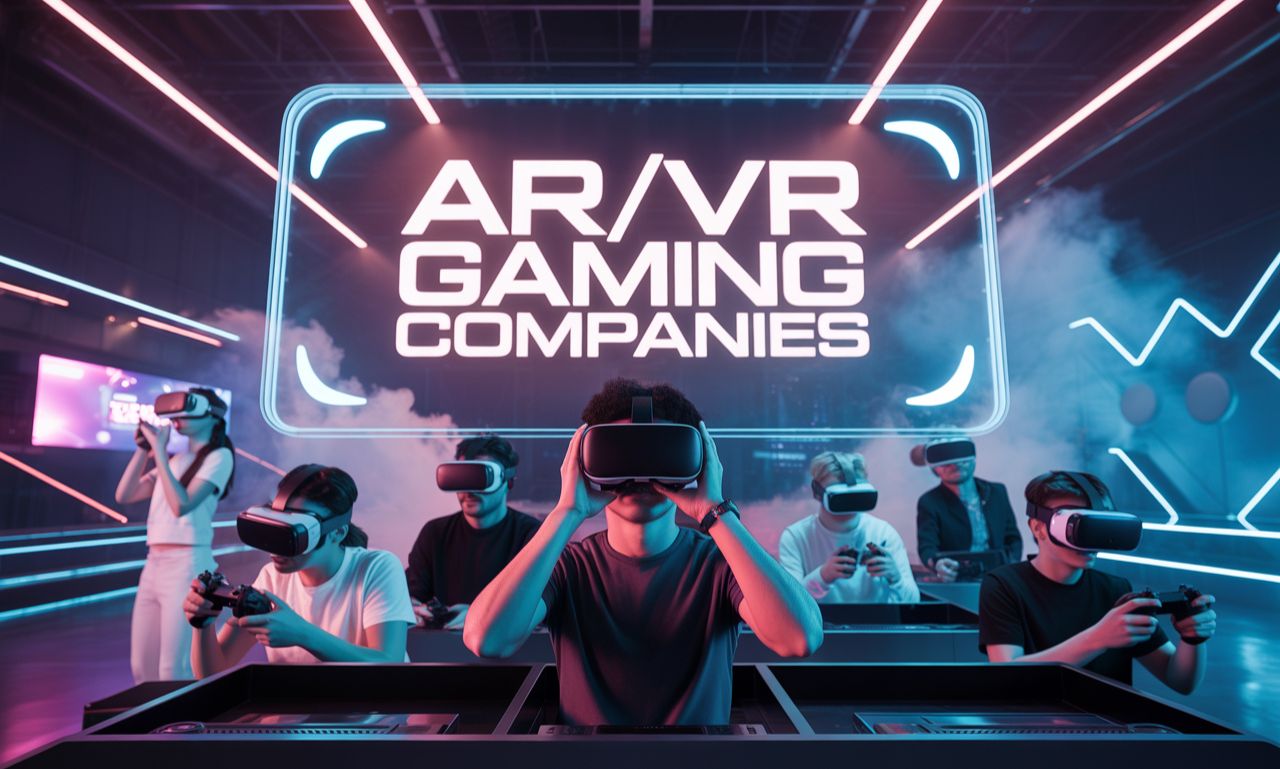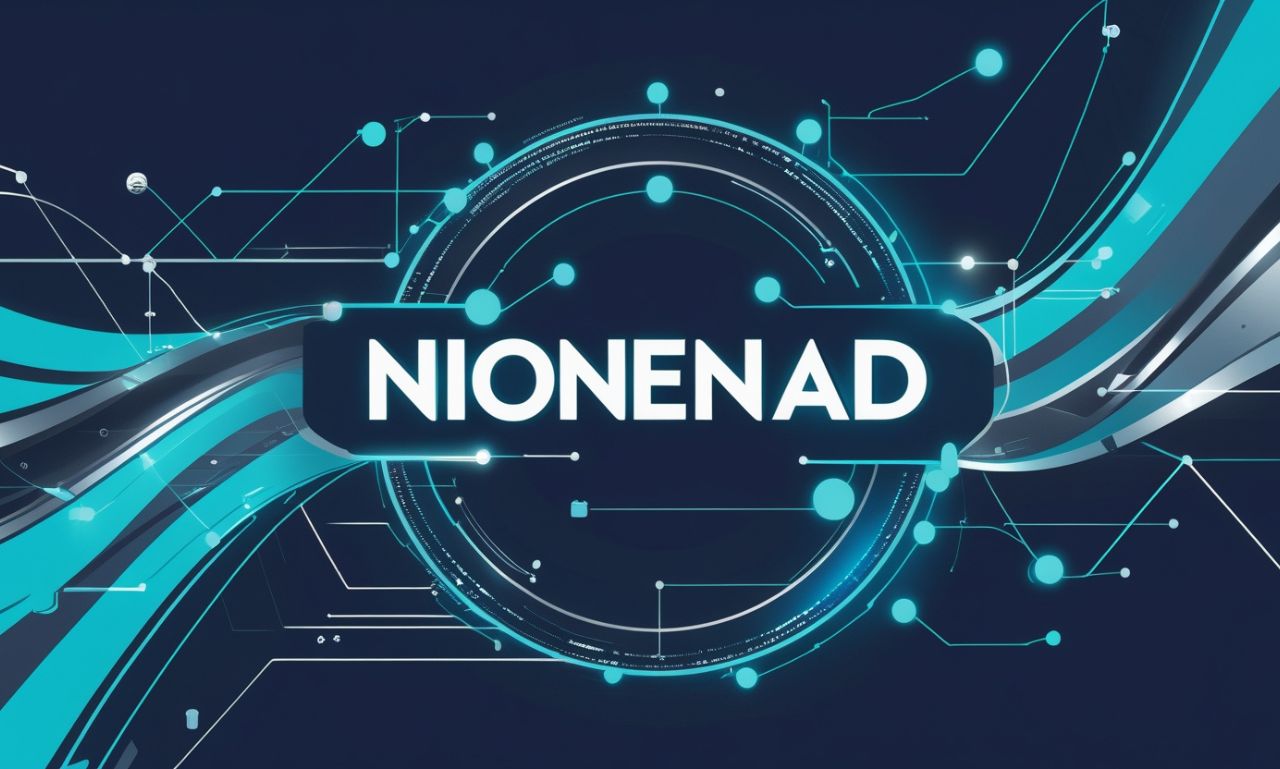AR and VR have turned “watching” into “being there.”
The same headsets that drop players into fantasy realms are now redefining competitive gaming for fans, athletes, and broadcasters alike.
As the top AR/VR gaming companies push this tech forward, traditional eSports finds itself on the edge of a brand‑new playing field, one filled with spatial stats, 360‑degree cameras, and arenas that don’t exist on any map.
In this blog, we’ll talk about
Redefining the Spectator Experience
VR‑powered viewing enables fans to step inside the arena with players
Slip on a headset and the match no longer unfolds on a flat screen; it surrounds you. Spectators can station themselves at midfield, glide behind a star striker, or hover above the entire battlefield all without leaving the couch.
That proximity transforms passive viewers into virtual participants. Crowd noise feels local, player chatter echoes realistically, and big plays spark instinctive head turns instead of mouse clicks.
360° camera angles and immersive broadcasts increase engagement
Production crews stitch multiple feeds into a single sphere, letting fans control their vantage in real time. Missed a crucial flank? Tilt your head and rewind instantly from a different seat.
Greater agency keeps attention high and session times long. Broadcasters report that audiences exploring 360° streams linger well past the intervals where traditional viewers would tab away.
Esports tournaments are integrating AR overlays for live stats and interactions
AR glasses or phone apps project damage meters, cooldown timers, and heat maps right over the live stage. Fans track performance without looking down at secondary screens, creating a seamless marriage of data and drama.
Interactive overlays invite gestures: point at a player to see kill streaks, tap a logo to claim digital swag, turning spectatorship into a two‑way exchange that brands can measure and monetize.
Creating New Competitive Game Formats
AR/VR unlocks skill‑based games rooted in motion, reflex, and spatial awareness
Unlike mouse‑and‑keyboard titles, VR shooters ask players to duck, lean, and physically aim. Success blends athletic agility with tactical thinking, introducing a fresh layer of mastery.
Physicality widens talent pipelines. Gymnastics students, fencers, and dancers discover transferable skills, reshaping what an esports athlete can look like.
Games like Echo VR and Blaston are pioneering immersive esports categories
Echo VR’s zero‑gravity arenas demand three‑dimensional positioning and team acrobatics, while Blaston pits players in bullet‑hell duels requiring real‑world dodges. Both illustrate how immersion spawns genres that flat screens can’t replicate.
Tournament organizers seize on these novel formats to stand out in a crowded calendar, drawing audiences eager for spectacles they haven’t already memorized.
Studios are designing for physicality, which adds new depth to competition
Level architects position cover objects for natural crouches, while game engines log calories burned alongside kill counts. Matches become tests of stamina as much as strategy.
Rulebooks evolve accordingly, covering safe‑zone boundaries, equipment hygiene, and officiating standards that keep competition fair when bodies move as much as avatars.
Attracting a New Generation of Esports Athletes
VR esports require athleticism, coordination, and stamina not just reaction time
Training regimens now include cardio circuits and balance drills. Competitors practice quick lunges to dodge projectiles or stabilize rifles during rapid head turns.
This physical edge appeals to athletes who once dismissed gaming as sedentary. Their arrival diversifies rosters and raises performance ceilings across leagues.
Players are training in mixed‑reality setups that blend fitness with gameplay
Gyms retrofit with motion‑tracking rigs, mirrored walls, and cushioned floors. Coaches analyze both digital stats and biomechanical metrics, fine‑tuning posture to shave milliseconds off shot times.
The hybrid environment blurs the line between sports science and esports analytics, giving VR teams data granularity previously reserved for Olympians.
AR/VR competitions appeal to athletes from both gaming and sports backgrounds
Former basketball guards leverage footwork in Echo Arena mid‑air jukes, while ex‑archers dominate VR bow simulators. Crossover talent expands viewer demographics, attracting fans who follow traditional sports into virtual stands.
Sponsors notice the broadened appeal, signing deals that once bypassed esports entirely, and injecting fresh capital into emerging leagues.
Driving Innovation in Esports Event Production
AR tech enhances live events with dynamic visuals, player holograms, and real‑time stat projections
Arenas beam life‑sized holograms of in‑game avatars beside their human pilots. Stats cascade around them like digital banners, updating each time a point scores.
The spectacle captures highlight reels in real time an experience that online clips barely convey and on‑site audiences share across social media within seconds.
VR arenas create interactive, location‑based esports tournaments
Pop‑up VR stadiums let fans play minigames in the same digital space as pros during event intermissions. The line between competitor and spectator blurs, increasing ticket value far beyond a seat in the stands.
Organizers rotate these arenas through cities, turning tournaments into touring festivals that activate local gaming communities.
US studios are collaborating with event organizers to push hybrid experiences
Game devs expose APIs for live data feeds, while staging companies integrate that data into lighting cues and on‑floor AR effects. Together they craft shows where every kill triggers synced pyrotechnics in both code and reality.
Such partnerships raise production standards across the industry, forcing purely digital events to innovate or risk looking dated overnight.
Expanding Accessibility and Global Reach
Virtual esports tournaments remove geographic and venue limitations
Teams from rural towns compete on equal footing with coastal powerhouses inside shared virtual arenas. Travel visas and stadium rentals no longer gatekeep participation.
Lower barriers democratize talent discovery, filling brackets with fresh faces and stories that resonate worldwide.
Remote participation through VR lowers entry barriers for global players
Competitors only need a headset and stable internet to enter qualifiers. Prize pools tap broader markets, and time‑zone staggered matches keep viewership humming around the clock.
Global reach delights sponsors chasing incremental exposure, reinforcing investment loops that fund bigger events.
AR‑enhanced mobile games enable scalable, location‑based competitions
Geofenced tournaments at malls or parks overlay digital capture points onto physical spaces. Casual players stumble into competition during daily routines, swelling participant numbers without costly marketing blasts.
These hyperlocal events funnel newcomers toward larger online leagues, feeding a growth funnel that traditional esports still struggles to replicate.
Shaping New Monetization Channels
Immersive environments create unique branding and sponsorship opportunities
Virtual billboards curve along space‑station corridors, while branded weapon skins glow during slow‑motion replays. The 3D canvas offers placement angles flat streams can’t match.
Brands measure dwell time on sponsored scenery, converting those metrics into ROI narratives that justify premium rates.
In‑game skins, assets, and experiences can be tokenized or monetized directly
Limited‑edition VR jerseys and AR emotes sell as blockchain tokens, granting verifiable ownership and resale value. Players flaunt collectibles in pre‑match lobbies, turning cosmetics into social currency.
Secondary marketplaces generate ongoing royalties for studios and teams, creating revenue lines long after box‑office launch fades.
Esports orgs and creators are leveraging AR/VR for premium fan content
Backstage passes let supporters stand virtually beside pros during warm‑ups or analyze match footage from inside the game map. These experiences command subscription fees or pay‑per‑view pricing.
Monetization layers stack tickets, merch, and digital collectibles, boosting overall earnings per fan compared to traditional 2D streams.
Influencing Game Design for Competitive Balance
Developers must account for motion tracking, hardware differences, and player safety
A headset’s tracking volume shapes arena size, while controller latency influences hit detection timing. Fair play demands config presets that normalize disparities across devices.
Safety guidelines restrict sudden camera motions and require configurable comfort options, ensuring competition doesn’t sideline entrants prone to motion sickness.
Game rules, hitboxes, and physics are being reimagined for fairness in 3D spaces
Hitboxes extend to full‑body avatars, demanding precise collision math that factors in crouches, leans, and limb positions. World physics compensates for minor tracking drift to avoid punishing players over hardware quirks.
Balancing these variables becomes a multidisciplinary effort spanning design, engineering, and sports science.
US‑based AR/VR studios are setting new standards for immersive game balance
Rulebooks now specify minimum headset refresh rates and controller sampling thresholds. Tournament kits ship with standardized calibration tools, ensuring consistency match to match.
These practices influence global leagues, positioning US studios as thought leaders whose design philosophies ripple outward.
Building Esports Communities Around Immersive Play
Social hubs and metaverse‑style lobbies foster team bonding and fan interaction
Virtual lounges let fans high‑five avatars of their heroes, discuss tactics on whiteboard screens, and queue for mini‑games together. Such shared spaces deepen community bonds beyond text chats and Discord servers.
Clans organize training sessions inside these hubs, turning practice into a public spectacle that recruits new members organically.
Streamers are adopting AR/VR formats to create content that breaks the screen barrier
Mixed‑reality setups show creators inside the game world, swinging swords or dodging lasers. Audiences watch both real effort and digital payoff simultaneously, heightening entertainment value.
Viewer donations trigger in‑game fireworks or spawn cosmetic gifts, merging monetization and spectacle in real time.
Community‑driven events and tournaments are fueling grassroots esports movements
Mod tools empower fans to craft custom maps, rule sets, and seasonal leagues. Community moderators run bracket websites and sponsor prize pools crowdfunded through skin sales.
Grassroots ecosystems incubate talent and ideas that bubble up to professional circuits, extending the esports ladder organically.
AR/VR Is the Next Level of Competitive Gaming
Immersive tech isn’t replacing legacy esports; it’s adding new dimensions literally and figuratively. From sensory viewing to full‑body competition, US AR/VR studios are redrawing the boundaries of how games are played, watched, and monetized.
As headsets lighten and networks quicken, expect these innovations to shift from cutting‑edge curiosities to mainstream staples. The arena is widening, and everyone players, fans, investors stands to gain from the deeper, richer future of competitive play.
The gaming market waits for no one. While you ponder options, competitors launch with stunning visuals that capture audiences. Devsinc has 15 years of experience turning 3000+ projects into visual triumphs. Players reward beautiful games with their time and wallets. Make your move now before your launch window narrows.











